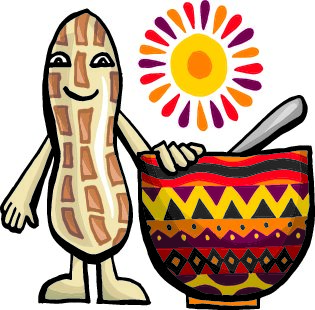
The story behind Maffé
Maffé is an African food touchstone, and, similar to other food touchstones it has deep roots in its culture and more than a zillion variations. Like harissa in northern Africa, gumbo down in Louisiana, or an Italian grandmother’s pasta sauce, the recipe is slightly different to family, but each version shares the same basic makeup and, in its home, is eaten by nearly everyone regularly.
Typically served over rice, maffé is a dish that’s also a sauce, common throughout the sixteen countries of West Africa. The one we sell comes from the culinary traditions of Jainaba Jeng and her upbringing in The Gambia. It’s made from garlic, vegetables and spices all cooked in a peanut and tomato sauce. In Jainaba’s version, she adds lots of fresh ginger and garlic as well as habanero peppers and lime juice. The ginger and peppers give it a prickly edge of spiciness that’s rounded out by the sweetness of the tomatoes and peanuts. It’s bright, tangy, spicy and nutty all at the same time—totally delicious to palates from any country.
“Making maffé from scratch is very time consuming.” Jainaba explains. “It simmers for hours and hours. Traditionally you’d make a large batch and serve it with different meats or vegetables for days till you ran out and had to make more.” If the description reminds you of making homemade pasta sauce from grandma’s recipe, you’re not far off. This was grandmother’s food, meant to feed a lot of people with leftovers to boot. And like any grandma’s food, it’s difficult to replicate in a two-income household today so thank heavens for good cooks who put these things in bottles.
Using maffé sauce is as easy as using pasta sauce. It’s common to season a chicken or seafood dish with half a jar of maffé along with some carrots, peas and potatoes. But I’ve been experimenting and I’m pretty sure there really are no limitations to what you can add. Whatever’s in season works well. Serve it over a bed of rice or couscous or noodles.